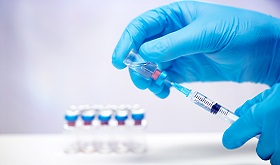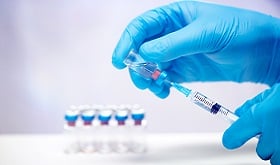
By Brett Marshall, Corporate Head of Quality Assurance
The COVID-19 pandemic defence has entered a new phase since the start of 2021 with vaccine supplies slowly beginning to arrive in countries across the globe, as part of the internationally funded COVAX programme or through direct purchases by country governments from manufacturers. However early concerns for air freight capacity are yet to be realised. As of the first week of March, there are nine vaccines approved and in distribution. Whilst there are 22 global manufacturing locations, the volume of doses available for use with patients number in the millions rather than the billions so far.
The production and distribution of the vaccine has given rise to an evolving complexity of supply chain networks, with collaborative relationships forming at unprecedented levels, like never seen before. These span across research and development and from production to fill-finish stages, where companies who are competitors are now willing to share manufacturing capacity.
Just as reliable supply chains do not suddenly appear and require careful planning—and usually some trial and error with options and a period of run and review before kinks can be removed—so too the situation for the evolving vaccine supply network which has been expected to perform at optimum while in its formative stages.
In addition to production capacity, there are several supply-side challenges for raw material (bio- logical material for mRNA vaccines) and packaging components such as vials are subject to supply and capacity constraints. Vaccine nationalism is also currently resulting in the available output being restricted from export outside the country of manufacture.
Because the products are vaccines and immediate supply is finite, there is a "zero error" expectation of performance for the combined chains in the network. The vast array of stakeholders operating therein and for whom the "customer" demand is global and numbers not hundreds of thousands, or even millions, but billions!
The gradual ramp-up of supply should allow logistics partners, involved in moving the vaccines from manufacturing to the countries' last mile point of vaccination for patients, time to establish their operating practices. These procedures must meet the different temperature control requirements of the products for storage, transport and during vaccination. This is especially crucial for products requiring storage temperatures at below zero to -80°C to -70°C and -20°C.
Expansion of sub-zero storage options has also been required to manage the mRNA vaccines at temperatures below what is used for pre-existing vaccine handling, including farms of standing -80°C freezer units for one vaccine. Redundancy of systems, continuity of power supplies, pre- preventive maintenance and supply of critical parts all need to be part of planning for installation and operation. Equipment must be qualified as operating in compliance with international pharmaceutical guidelines of Good Manufacturing Practice (GMP) and Good Distribution Practice (GDP).
There has been a surge of new technologies and product offerings for active and passive packaging systems for air and road movement to accommodate the colder storage and transport temperatures. These must also be qualified as operating in compliance with GMP/GDP.
The visibility and transparency of the supply chain performance are key. But “production to patient” integration of these technologies involved throughout the chain remains a challenge. Multiple ERP systems and third-party software and systems, varying data structures and file protocols and increasingly rigorous cybersecurity protection continue to challenge, but the race to achieve this is well underway. The cybersecurity threat-risk for technologies associated with vaccine distribution must not be underestimated.
The multiple points in the network where transfer of responsibility takes place make an end-to-end view of risk management critical. For “zero error” performance, understanding risks and advance consideration of what remediation plans need to be established, should something go wrong is critical. Security to prevent the opportunity for counterfeit or adulterated products into supply chains for vaccines requires ongoing vigilance.
As available manufacturing capacity continues to expand and more vaccines are being approved for use in more countries, how the supply network and its component chains will handle expanding volumes will be interesting to watch.
